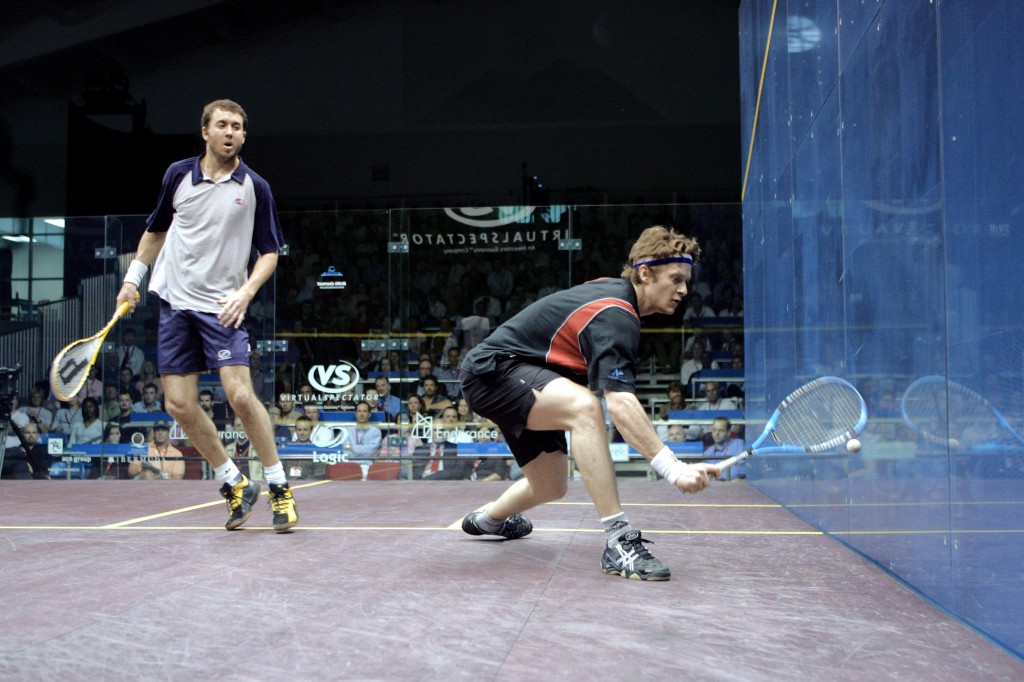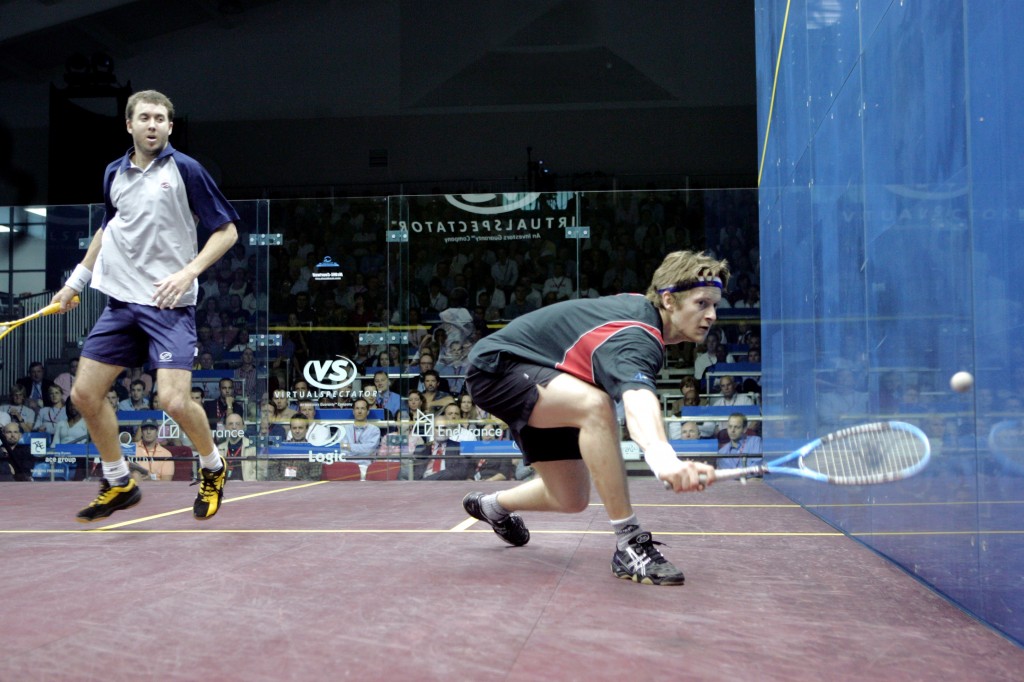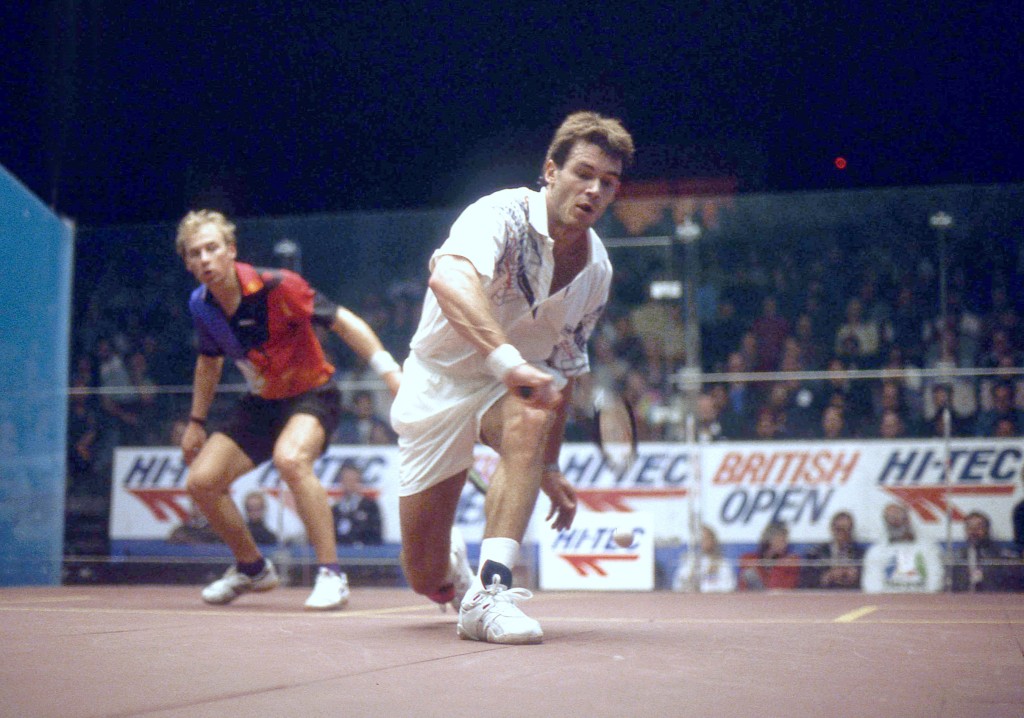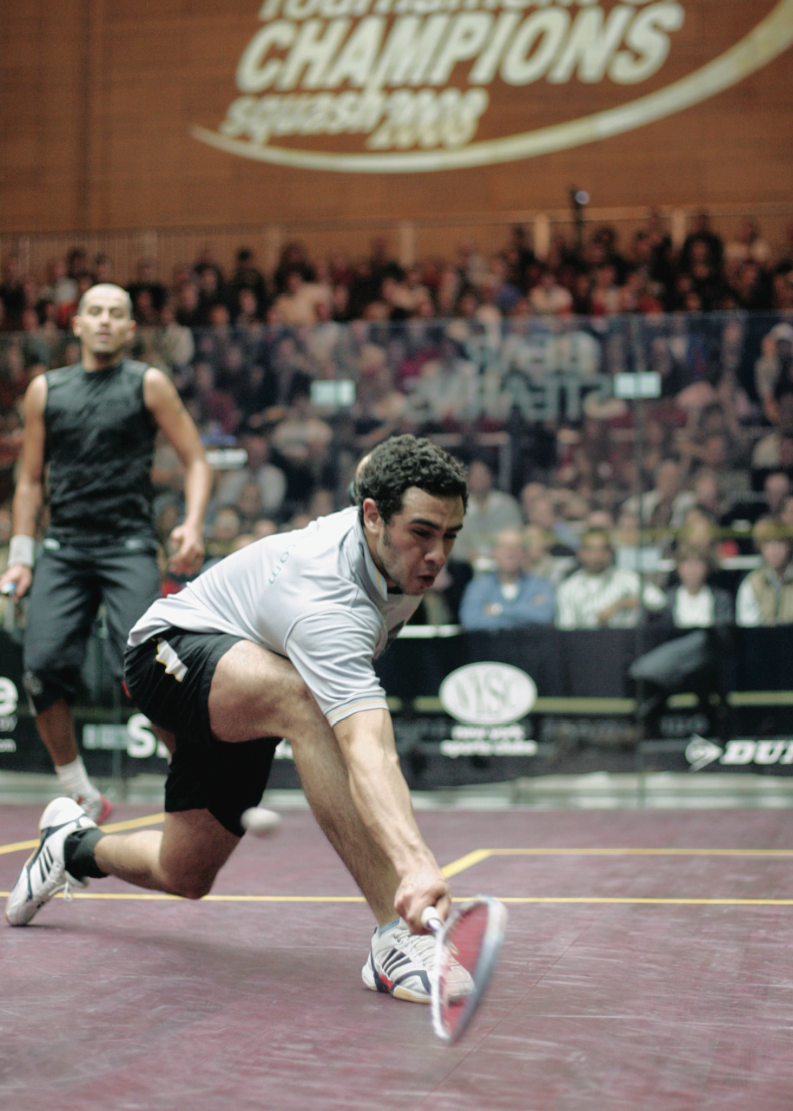
By Richard Millman, Director of Squash, Kiawah Island Club
Bordering on the magical, deception is the sexy, spectacular science of our game that so fascinates the crowd and is only second to the awe inspiring shock of a purely struck rolling nick in its capacity to elicit ooohs and aaahs.
But what is deception, and how do we go about creating it, practicing it and employing it in a judicious and effective way?
At the fundamental level, deception is surprisingly biological in its essence—eliciting the “Fight or Flight” response; it is the product of the adrenaline system where, in moments of great need, adrenaline is released into the system to sort of supercharge the reactive capacity. Hence the stories of superhuman feats by individuals who have experienced particularly large injections of adrenaline. I believe that adrenaline is automatically released in times either of great need or in times when we are persuaded that we are going to have a great need. Part of the trick of deception is to fool the opponent’s adrenaline system, either by accelerating the shot faster than the adrenaline system can react, or by holding for a long time and fooling the adrenaline system into releasing the hormone into the system. Then, either by delaying or throwing their reactive system into overload, they are forced to commit to movement before they actually have hard evidence of where the ball is going. Add to this chemical response, the intrigue and manipulation of body language and excellent racquet preparation, and you have the perfect recipe for low-down dirty tricks in the wonderful tradition of disguised and deceptive shots.
Where to begin? As with almost everything in our game, deception begins with racquet preparation. If you can prepare your racquet early you create more options. Of course the combination of the quality of the opponent’s shot, the efficiency of your technique both in moving and preparing, and your physical condition, all produce a sliding scale of effectiveness. This being understood, when you manage to set up early, the opponent is forced to seek cues in order to react to your shot. A top class player will ignore your body language and take those cues purely from the ball. But even a top class player will unwittingly absorb some of the body language cues that you display. For instance, if you arrive at the ball with a less than perfect preparation, the opponent will be warned as to the moment that the ball is going to be struck by any last minute twitches of movements of the racquet. Should you keep the racquet perfectly still, however, the opponent receives no cues and must stand still to await further information. Note that I am not talking about where the ball is going, only when. At this point this is the essential information that the opponent is seeking—where is something that comes later. It is at this moment that you, as the striker, can opt for deception—or not—and if so, what kind.
There are two most common types of deception: 1)Brief Hold/Quick acceleration (i.e., getting the jump on the opponent’s reaction system) and 2)Long Hold/then hit—which has the effect of overloading the opponent’s reactive system.

1) Short Hold/Quick Acceleration:
Move onto the ball early with a clean, stationary, racquet preparation. Having momentarily held your racquet still, suddenly and explosively release the shot, giving the opponent no physical cues as to when you will release the shot.
2) Long Hold
As with the short hold, move into position with a clean, stationary racquet preparation. This time, instead of the quick strike, hold for as long as you can, hoping that the adrenaline-loaded opponent cannot hold on and commits to moving before you strike the ball.
With both of these examples it is imperative that the accuracy and quality of your shot not be sacrificed for the sake of ‘being deceptive.’ Too often players fall in love with disguise but fall short because the quality of the shot they strike is so inaccurate that, rather than the opponent being penalized by the deception, the deceiver is penalized by the counter attack that results from a poorly targeted shot.
With both of these examples, some additional behavior can enhance the deceptive qualities:
 Learning to hit in several directions from the same footwork set up is very important.
Learning to hit in several directions from the same footwork set up is very important.- Developing wrist control to change the direction of the shot at the last moment is another skill that greatly adds to the attack of the adrenaline system.
- Learning to exaggerate the body language to suggest an outcome to the opponent is another frill.
- Hiding the ball from the opponent’s line of sight in addition to suggestive body language is yet another very effective frill to add to the Long Hold version.
Beware of this last skill. A common mistake is to shape for one shot and execute what is commonly referred to as a fake, while the ball is still in full view of the opponent. This is frequently a disaster as the would-be deceiver has temporarily given up visual connection with the ball, while the opponent has never lost it and now has the opportunity to strike while the deceiver is temporarily indisposed. Covering the opponent’s line of sight takes a great deal of practice and should not be attempted without a lot of professional guidance and practice, and then only when the opponent leaves a ball loose enough for the opportunity.
Some advanced deception skills incorporate taking the power of suggestion to the brink of actually executing the shot that is being proffered to the intended victim.
Some of the world’s great deceivers have used this method to great effect. Names such as Brett Martin, Jonathon Power and now Ramy Ashour spring to mind as particularly skilled exponents. While building the deception around the principles I have explained earlier in this article, the extra element that these giants of the game were able to add, created what was often, exasperatingly, the coup de grace against even the best players in the world.
Here is a description of one of Brett Martin’s particular favorites: Having attacked the opponent with great length and forced either a back wall boast, a weak defensive drop or a defensive boast, Brett would arrive early and commence a drop shot, bringing his racquet within a half inch of contact with the ball. Seeing him in the act of striking the drop shot, the opponent would move forward to cover the drop with some urgency only for Brett to miraculously and with extraordinary power retract his racquet face from the ball impossibly late and, with the amazing power of his forearm and wrist, pound the ball explosively to the back of the court. In golf terms this is the equivalent of any of Phil Mickelson’s uncanny trick shots. In my opinion, one of the many tragedies of our very limited prize money in squash is that a genius of Brett Martin’s unique ability is lost to us—where in golf or tennis, we would still be seeing him on a regular basis on the champions tour or in exhibitions. Who knows—if our game grows enough in the next few years, perhaps we will have the privilege of Brett Martin, Jonathon Power and others returning to amaze us.
The final description of deception I am going to mention is of a skill developed by Jonathon Power. Perhaps readers who have been around longer than me will disagree, but in my estimation Jonathon changed the game when he developed this skill.
All deception is grounded in the principles I mentioned at the beginning of the article.

However, whether you go for a short or long hold, hiding or showing the ball, faking or not, until Jonathon all deceptive shots finished with a sudden acceleration.
To my knowledge Jonathon was the first to successfully incorporate the reverse.
First of all consider that even if you move the wrong way, you usually can redirect your movement with some sort of forward acceleration, because you are exploding forward.
So now imagine you are in a rally. You and your opponent are trading shots up and down the forehand wall. Your opponent gets in front to volley and viscously accelerates his racquet head at the ball for an attacking drive-volley into the back corner. Quite naturally you push your body weight back toward the back corner. But—disaster! Just before the opponent’s racquet accelerates through the ball in his attempt to drive the ball past you, the opponent’s racquet arm suddenly decelerates to deftly deliver the most delicate of drop volleys. With your body weight leaning backwards, you have zero forward momentum capacity and you are left hopelessly impotent, a spectator as the ball innocuously drops harmlessly in the front corner. Sounds simple doesn’t it? But the physical strength and timing required to execute this masterpiece are abnormal, never mind the fact that it is completely counterintuitive. Such was the genius and empathy of Jonathon Power to feel the opponent’s expectations and to uniquely countermand them.





